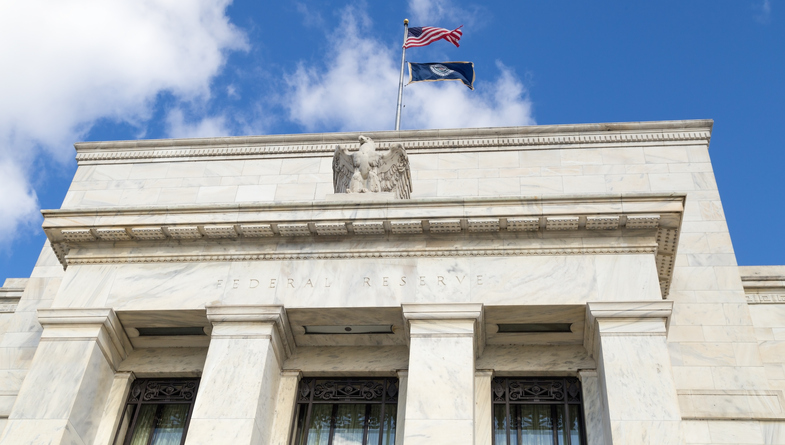The Markets – Again U.S. equities experienced a rough and volatile month in March. The S&P 500 index finished the month down 2.69% leaving it at a year-to-date loss of (1.22%) for the first quarter of the year.
Washington – President Trump is the master of controversy. Like him or not, one must acknowledge that he continues to create controversy through trade related messages. Those who like Trump support his ideas and those who do not like Trump believe he could derail the economic system. While Washington may not be the sole reason for market volatility, the rhetoric certainly is a contributing factor.
The Economy – The U.S. economic outlook remains healthy according to the key economic indicators. The most critical indicator is the Gross Domestic Product (GDP), which measures the nation’s production output. The GDP growth rate is expected to remain between the 2 and 3 percent range, with most economist predicting numbers closer to 3%. Unemployment remains low and the Federal Reserve remains steadfast that inflation remains low or in an ideal range. President Trump has promised to increase GDP to 4% which, as GDP ramps up, inflation is expected to ramp up, which could then cause GDP to reverse and lead the U.S. into a mild recession.
A bit about volatility and the markets – The idea that markets have become structurally more volatile, in simple terms, means security prices are likely to swing more violently and more swiftly due to structural changes in the way markets function. The essence of the idea is that faster technology and trading speeds, combined with growing use of ETFs, derivatives, and automated trading strategies, have resulted in more assets sloshing around unpredictably within the financial system. This exacerbates security price movements and increases stress on investors. Moreover, policymakers would be less able to provide intervention as fiscal deficits mount and central bankers are effectively out of ammo. This could cause future selloffs to be deeper and more prolonged.
In contrast, investors generally experience event volatility – something happens, markets react, and we understand the proximate cause of the losses. Modern examples include the “Asian Flu” in 1997, 9/11, and the bursting tech and credit bubbles in 2000 and 2008. Compared to event volatility, structural volatility is more insidious, as selloffs could appear with no obvious catalyst, becoming more difficult to address and explain. Examples might include the S&P 500® “flash crash” in May 2010 or the US Treasury “flash rally” in October 2014 – big unexplained moves with little fundamental rationale. Our conclusion is that investors should prepare themselves for a riskier investment environment regardless of the news cycle.
A technical correction – In February, the swoon began. The losses seemed to have no obvious fundamental driver, so market watchers blamed it on the sufficiently vague “technical correction.” Our best guess is that the market became temporarily spooked by fears of inflation, higher rates, less accommodative central banks, and the possibility that the global economy was so strong it might overheat. It didn’t help that equity prices had probably run up far too quickly in January in anticipation of the new tax code.
While we agree, we believe there was more at work here – most likely systematic selling by strategies that are required to de-risk into periods of volatility. As a result of volatility management techniques and requirements, volatility effectively ricochets around the markets, forcing de-risking (i.e., selling) which creates more volatility, which typically forces more selling, and so on… The process can also work in reverse: markets eventually calm down, volatility falls, strategies re-risk, and the buying pressure causes prices to rebound (even more) quickly.
Our outlook for volatility is that we believe investor expectations have evolved in ways that have changed the market narrative. These include inflation finally picking up (albeit modestly), yields rising closer to more competitive levels, and central bank actions that are likely to be less benign. In essence, it seems markets are simply running closer to the edge, making them more prone to random bouts of volatility.
High frequency trading adding to your miser? If you care to learn more about the phenomenon of high-frequency trading (HFT) we suggest you check out the book Flash Boys by Michael Lewis. The book takes a look at how electronic trading replaced the trading floor, and how that change impacted the market. The speed of data is a major theme in the book; the faster the data travels, the better the price of the trade. Lewis claims access to this fiber optic cable, as well as other technologies, presents an opportunity for the market to be controlled even more by the big Wall Street institutions. He goes further to suggest that broad technological changes and unethical trading practices have transformed the U.S. stock market from “the world’s most public, most democratic, financial market” into a “rigged” market.
In our opinion, one simple way to combat the HFT is to reinstate the Uptick Rule. There has been a lot of discussion about the Uptick Rule and whether it should be a part of the financial markets. First instituted by the Securities and Exchange Commission (SEC) in 1938 as Rule 10a-1, the uptick rule prevents securities from being consecutively short sold without the stock trading higher at least once between short selling orders. The rule was first instituted after the Depression-era turmoil in the financial markets and was maintained until 2007 when the SEC eliminated it. To read more one simply needs to google “The Uptick Rule”. There have been much written regarding the Uptick Rule debate.
Have a question? Let me know! Email me at kcompton@wsmtexas.com.

